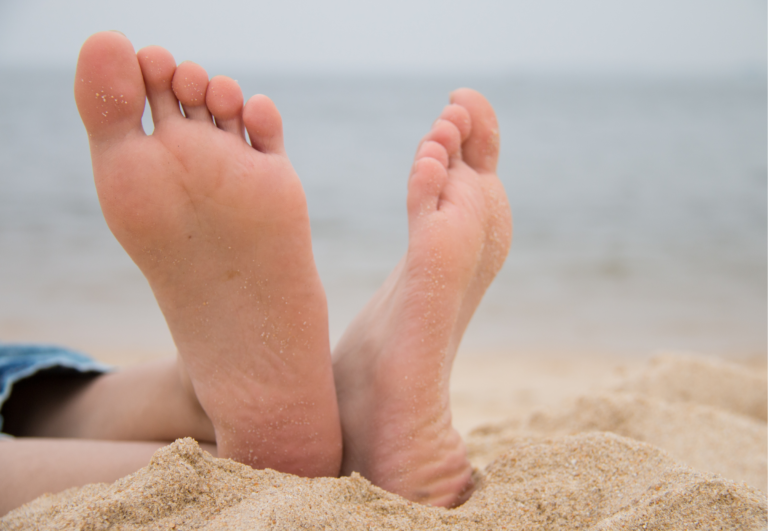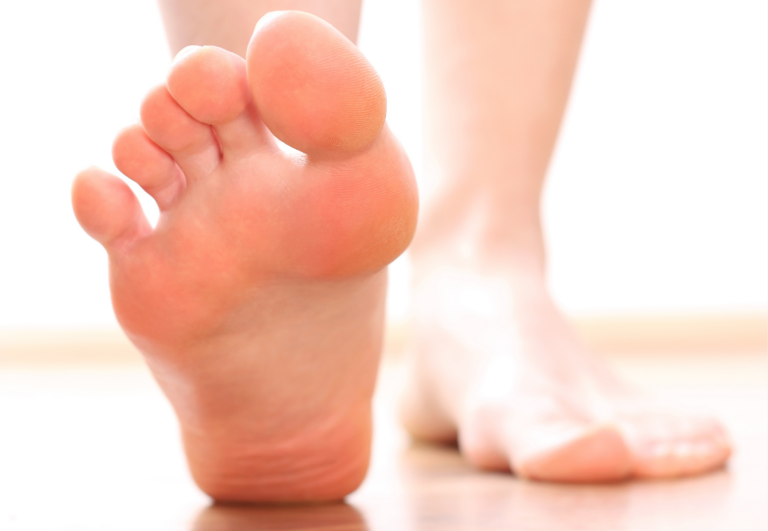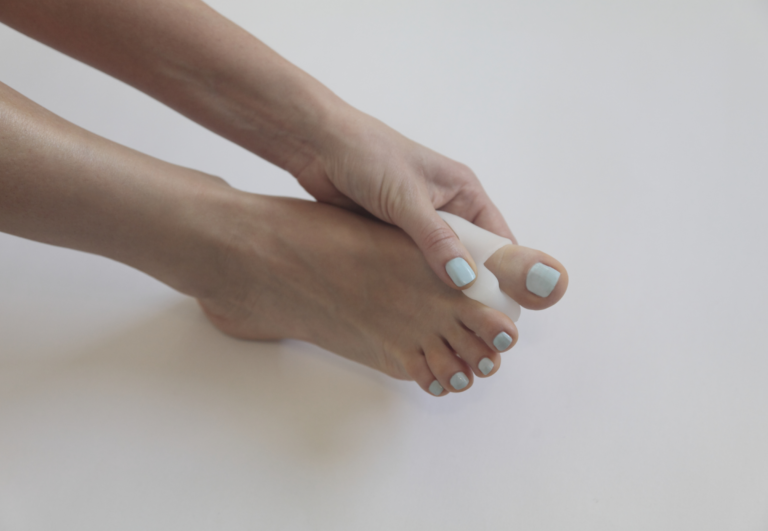Using Toe Spacers for Foot Care With Runners: Essential Tips for Peak Performance
As a toe spacer expert, I’ve seen firsthand the impact proper foot care has on runners. Consistent running places a significant demand on your feet, making it crucial to maintain their health to prevent injuries and ensure longevity in the sport. From choosing the right footwear to understanding the mechanics of foot movement, every aspect of foot care plays a vital role in a runner’s performance.
One of the key components I recommend is the use of toe spacers, which can help in maintaining proper toe alignment. This practice promotes a more natural foot position, potentially reducing the risk of blisters and other common foot issues that runners face. It’s not just about the gear, though; daily foot hygiene and regular checks for any signs of strain or injury are essential steps in a runner’s routine.
Incorporating simple exercises to strengthen the feet can also provide benefits. This might include toe curls, heel raises, or stretches that target the plantar fascia and Achilles tendon. These exercises contribute to a runner’s foot strength and flexibility, which can improve overall running biomechanics and efficiency. Remember, while I offer advice based on experience, it’s always wise to consult a professional for individual needs and concerns.
How To Use Toe Spacers for Foot Care With Runners
Runners can incorporate toe spacers into their foot care routine to address issues related to toe alignment and to promote overall foot health.
Here’s a guide on how to use toe spacers for runners:
- Start Gradually: Begin by wearing the toe spacers for short periods, such as 10-15 minutes, after your run. Gradually increase the time as your feet adjust to the spacers.
- Post-Run Stretching: After removing your running shoes, insert the toe spacers and then engage in your usual post-run stretching routine. The spacers will help stretch and realign your toes during this crucial recovery period.
- Relaxation Time: Use toe spacers during periods of rest or relaxation, such as while reading or watching TV. This can help counteract the compressive forces experienced during running.
- Strengthening Exercises: Perform foot strengthening exercises with toe spacers in place to enhance the benefits of those exercises. Toe splay, curls, and marble pickups are examples of exercises that can be done with spacers.
- Consistency: Make using toe spacers a regular part of your foot care routine to see ongoing benefits. Consistency is key to helping alleviate and prevent issues like bunions, hammertoes, or plantar fasciitis.
- Precautions: Avoid wearing toe spacers during running until you’ve consulted with a professional, as they can alter your gait and may not fit comfortably in your running shoes.
- Listen to Your Feet: If you experience any pain or discomfort beyond mild stretching sensations, reduce the time you wear the spacers or stop using them and consult with a healthcare provider.
By using toe spacers as part of their foot care routine, runners can help ensure their feet remain healthy and strong, potentially improving their running performance and reducing the risk of foot-related injuries.
Foot Biomechanics for Runners
As a toe spacer expert, I can’t emphasize enough how crucial foot biomechanics are to a runner’s performance and health. Strong knowledge of gait, balance, and pressure distribution can improve your runs and prevent injuries.
The Importance of Gait and Stride
Your gait, the way you walk and run, involves a complex interaction between your feet, ankles, knees, and hips. The stride, specifically, is the full cycle of a step from one foot to the next. A balanced gait helps distribute pressure evenly, reducing strain on your joints.
Pronation and Supination Explained
Pronation and supination are part of natural foot mechanics. Pronation refers to your foot rolling inward upon landing, which cushions the impact. Conversely, supination involves the outward roll, influencing balance and stride efficiency. Both movements are normal but should be in moderation for optimal mechanics.
Balance, Pressure, and Foot Mechanics
While you run, your balance relies on how pressure shifts through your feet. Too much pressure on the inside or outside can lead to problems. I recommend using toe spacers to promote proper toe alignment, which can enhance balance and contribute to healthier foot mechanics.
Choosing the Right Footwear
In my experience as a toe spacer expert, it’s evident that selecting appropriate running shoes greatly impacts comfort and performance.
Running Shoe Selection
When choosing running shoes, the key factors are terrain and individual foot mechanics. For trail running shoes, seek options with enhanced traction and durability to handle rugged paths. Ideally, running shoes should offer a balance of comfort, support, and breathability. It’s crucial to consider shock absorption for impact protection and arch support that matches your foot type.
Importance of Proper Shoe Fit
A proper shoe fit is non-negotiable. Ill-fitting shoes can lead to discomfort and injuries, while a good fit can improve your running experience significantly. Shoes should be snug but not so tight that they restrict blood flow. There should be about a thumb’s width of space in front of your big toe. Additionally, for runners like me who use toe spacers, ensuring there is enough room in the toe box is essential for both comfort and the effectiveness of the spacers.
When to Replace Running Shoes
Regularly replacing running shoes is vital for optimal performance and foot health. The typical lifespan of a pair is between 600-800 miles, or every 6-8 months, whichever comes first. Pay attention to signs of wear, like diminished tread or less cushioning, which indicate it’s time for a new pair. Keeping track of your mileage can help you know when it’s time to shop for replacements.
Common Foot Ailments in Runners

In my experience with toe spacers and foot care, it’s evident that runners often face a plethora of foot-related issues. Among these, some of the most common ailments include blisters, calluses, plantar fasciitis, and toenail problems.
Blisters and Calluses
Blisters, often the result of friction, are small, fluid-filled bubbles on the skin which can be painful and hinder a runner’s performance. To prevent them, proper fitting shoes and moisture-wicking socks are essential. On the other hand, calluses are thickened skin areas that form in response to repeated pressure or friction. They function to protect the skin but can be uncomfortable. Using toe spacers can help realign toes and distribute pressure evenly, reducing the development of calluses.
Plantar Fasciitis and Heel Pain
Plantar fasciitis is an inflammation of the thick tissue band under the foot and a common source of heel pain among runners. It often presents as a sharp pain in the heel, particularly after resting or during the first steps in the morning. To alleviate plantar fasciitis, stretching exercises, proper arch support, and the appropriate use of toe spacers can be beneficial in maintaining foot alignment and relieving stress on the plantar fascia.
Black Toenails and Ingrown Toenails
Runners often experience black toenails, which are usually caused by repetitive trauma leading to bruising under the nail bed. Keeping toenails trimmed and wearing properly sized footwear can help prevent them. Ingrown toenails, where the nail grows into the skin causing pain and inflammation, can be averted by cutting nails straight across and avoiding shoes that compress the toes. In cases where they do occur, gently using toe spacers can assist in relieving some of the pressure on the affected nail.
Effective Foot Care Practices
Proper foot care is a linchpin for runners, supporting both performance and comfort. My emphasis on daily hygiene, strengthening, and proper stretching aims to help maintain optimal foot health.
Daily Foot Hygiene
Keeping feet clean and dry is essential to prevent issues such as blisters and fungal infections. I recommend a daily routine that includes:
- Washing feet with soap and water, ensuring dirt and sweat are completely removed.
- Thoroughly drying feet, especially between the toes, to eliminate moisture that can lead to issues.
- Applying a moisturizer to keep skin supple and prevent dry feet, which can crack and become painful.
In terms of socks, opt for moisture-wicking running socks. These can greatly reduce the risk of blisters and maintain a healthy environment for your feet by pulling moisture away from the skin.
Example of Ideal Running Socks:
- Material: Synthetic blend with moisture-wicking properties
- Fit: Snug but not constrictive
- Cushioning: Moderate to protect high-impact areas without being too bulky
Proactive Foot Strengthening
Strength in the feet is the foundation for every run. To build resilience:
- Practice walking barefoot when appropriate to encourage natural foot mechanics and strength.
- Incorporate toe spacers to help align and spread the toes for a more stable base.
- Use simple exercises such as picking up marbles or a towel with your toes to improve the function and strength of foot muscles.
| Strengthening Activities | Frequency | Duration |
|---|---|---|
| Barefoot Walking | Daily | 15-20 min |
| Toe Spacer Use | Daily | 30 min |
| Toe Exercises | Daily | 10 min |
Appropriate Stretching Techniques
Runners should include a mix of dynamic and static stretching in their routines for optimal foot flexibility and health.
- Dynamic Stretching should be performed before a run, focusing on movements that mimic running to prepare the feet.
- Static Stretching is better post-run to cool down the feet and lower the chances of post-exercise tightness. Hold each stretch for about 30 seconds.
- Regular foot massages can also aid in preventing stiffness and promoting circulation.
Essential Foot Stretches:
- Toe raises to stretch the plantar fascia
- Ankle circles to promote range of movement
- Calf raises to maintain Achilles tendon health
When to Seek Professional Help
Runners often face foot ailments from persistent pain to injuries. Knowing when to seek professional help can prevent minor issues from becoming serious problems. Here’s how to identify when expert care is necessary.
Identifying Serious Foot Conditions
Injuries like stress fractures or conditions such as plantar fasciitis require attention if pain persists or worsens. Signs such as swelling, redness, or a change in foot function are clear indicators that it’s time to consult a professional. Self-diagnosis can be tricky, and if basic remedies like rest, ice, or over-the-counter pain relief fail to provide relief, a podiatrist’s expertise is crucial.
Podiatrist vs. Physical Therapy
A podiatrist specializes in foot problems, from fungal infections to structural issues. If pain is your main concern or if it’s linked to a specific foot ailment, start here. For issues related to foot mechanics or after an injury, a physical therapy clinic may be beneficial. Physical therapists can provide supportive exercises and treatments to rehabilitate the foot.
Custom Orthotics and Support
Custom orthotics are specially-made devices designed to support and comfort your feet. They can be pivotal when generic insoles aren’t enough. Seek a podiatrist’s advice to assess if you need orthotics, which can correct alignment issues and improve foot function. Remember that while toe spacers can be helpful for spacing the toes and can improve foot mechanics, they’re not a substitute for professional medical devices or advice.
Optimizing Running Performance
Optimizing running performance involves a comprehensive understanding of how foot care can enhance endurance and speed. It’s not just about putting in the miles; it’s about doing it in a way that supports healthy feet.
Foot Care in Training Regimen
In my training routine, foot care is as important as the workout itself. After all, healthy feet are vital in sustaining my runs, from sprints to marathons. I make sure to incorporate flexibility exercises that target the muscles, tendons, and fascia in my feet—like toe spacers that help with alignment and spacing for better balance. Routine foot massages and proper hydration are key to maintaining circulation, which in turn, keeps my feet in top condition.
Impact of Running Surfaces
Choosing the right surface to run on is crucial for injury prevention and maintaining proper form. I prefer a crushed gravel path for my longer runs as it provides a balance between hardness and cushioning, reducing the stress on joints. Alternating with a rubberized track can be beneficial too. It’s softer and may decrease the risk of overuse injuries. Each surface impacts the body differently, and I listen to my body’s response to each.
Running Form and Injury Prevention
My focus on proper running form is relentless. I work with a running coach to ensure my posture and stride minimize impact on my calves and hamstrings. Also, awareness of body mechanics is essential to avoid overstraining my muscles and joints. It’s not just about the miles I log but also about the quality of each stride. Consistent form checks and drills enhance my performance and reduce injury risk.
Running is a demanding activity for the feet, requiring attention to detail in all aspects to optimize performance and prevent injuries.





